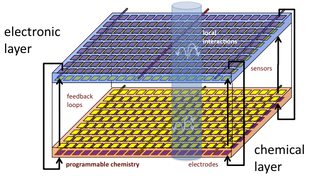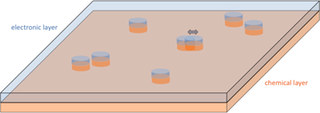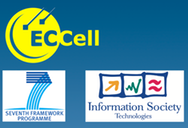 The ECCell concept is to establish a tight programmable coupling between a chemical process layer and an electronic process layer. This enhances the functionality of the chemistry and introduces a programmable interface to support system design and optimization. The two layers are coupled locally and in parallel by (i) a dense array of electrodes (chemical microprocessor chip) (ii) a dense array of fluorescence sensors (via CCD camera pixels). the overall design of this hybrid system is shown in Fig. 1.
The ECCell concept is to establish a tight programmable coupling between a chemical process layer and an electronic process layer. This enhances the functionality of the chemistry and introduces a programmable interface to support system design and optimization. The two layers are coupled locally and in parallel by (i) a dense array of electrodes (chemical microprocessor chip) (ii) a dense array of fluorescence sensors (via CCD camera pixels). the overall design of this hybrid system is shown in Fig. 1.

The aim is to bring the processing in these two layers to behave like a novel spatially resolved autonomous system. The moelcular genome of sequence information in the molecules being copied is then complemented by an electronic genome which also involves replicable information, for the local feedback circuitry: local concentrations->fluorescence->CCD pixel values->local electronic processing->electrode values->local concentrations.
In order to simulate this system we need a viable model of the influence of electrodes on the molecular transport.
Recent progress is reported by the two main groups involved:
